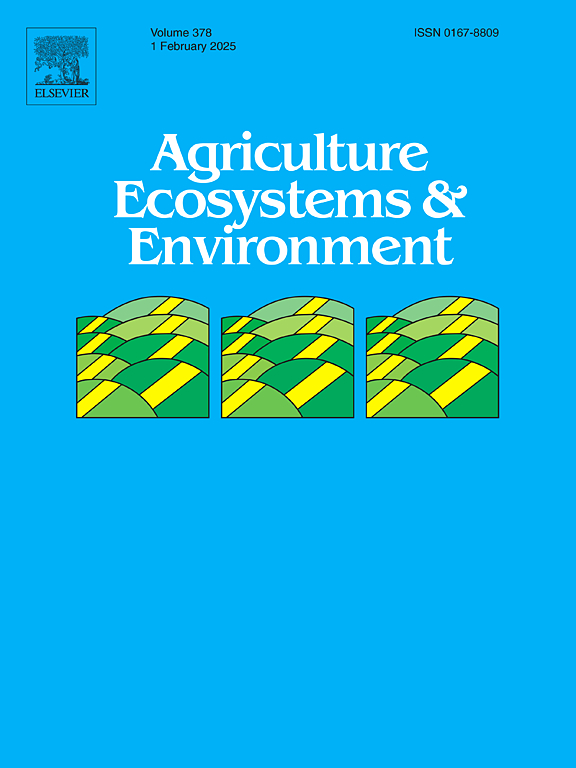Soil micro-structure drives trophic interactions within micro-food webs via bottom-up regulation under different planting patterns
IF 6
1区 农林科学
Q1 AGRICULTURE, MULTIDISCIPLINARY
引用次数: 0
Abstract
Agroforestry systems, a transformative planting pattern, have the potential to enhance soil health and maintain sustainable production. Planting patterns effects on soil micro-food webs, including organisms from multiple trophic levels, remain largely ambiguous. This study interpreted the effects of Sichuan pepper-bean agroforestry system (AF) on trophic interactions among the bacteria and fungi as prey and their predators protists in comparison to no-planting system (BK), bean monoculture system (A) and Sichuan pepper economic forest monoculture system (F) using high-throughput sequencing. Results showed that compared to BK, AF significantly increased the soil pH, total carbon and nitrogen, moisture content and capillary porosity (PorC), and enhanced the diversity of soil bacteria, fungi and protists (p < 0.05). Random Forest analysis indicated the bacterial diversity was well predicted by soil biological and chemical factors (p < 0.05), but the diversity of fungi and protists was better explained by soil physical factors. Meanwhile, co-occurrence network analysis visualized the shift of soil micro-food webs with planting patterns, presenting a network complexity order AF > A > F > BK. Mantel test revealed PorC significantly influence network structures by potentially altering the capabilities of soil organisms to disperse, forage, and predate. Partial least square path model demonstrated soil micro-aggregate had the greatest effect, i.e., marginal direct effect (5.85 %) and strong indirect effect (65.33 %), on protistan communities (71.18 %). These findings indicate soil micro-structure plays a vital role in shaping trophic interactions and affecting protistan community through bottom-up regulation, which provides important implications for leveraging soil properties as a catalyst to sustain agroecosystem functions.
求助全文
约1分钟内获得全文
求助全文
来源期刊

Agriculture, Ecosystems & Environment
环境科学-环境科学
CiteScore
11.70
自引率
9.10%
发文量
392
审稿时长
26 days
期刊介绍:
Agriculture, Ecosystems and Environment publishes scientific articles dealing with the interface between agroecosystems and the natural environment, specifically how agriculture influences the environment and how changes in that environment impact agroecosystems. Preference is given to papers from experimental and observational research at the field, system or landscape level, from studies that enhance our understanding of processes using data-based biophysical modelling, and papers that bridge scientific disciplines and integrate knowledge. All papers should be placed in an international or wide comparative context.
 求助内容:
求助内容: 应助结果提醒方式:
应助结果提醒方式:


